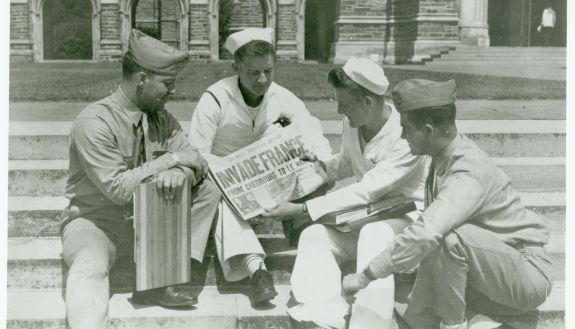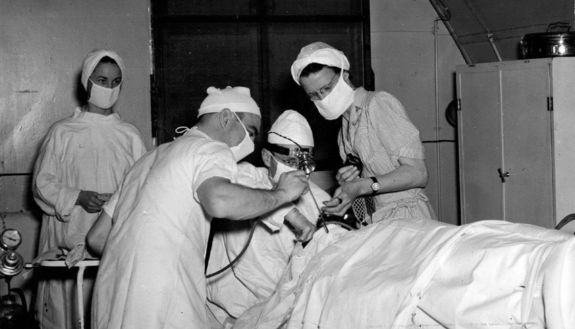D-Day Anniversary: Looking Back at Duke’s Contribution to the Effort in World War II
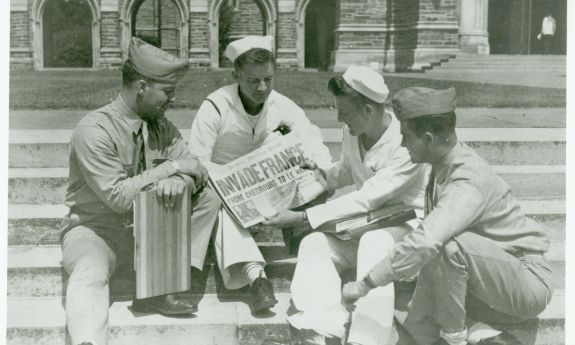
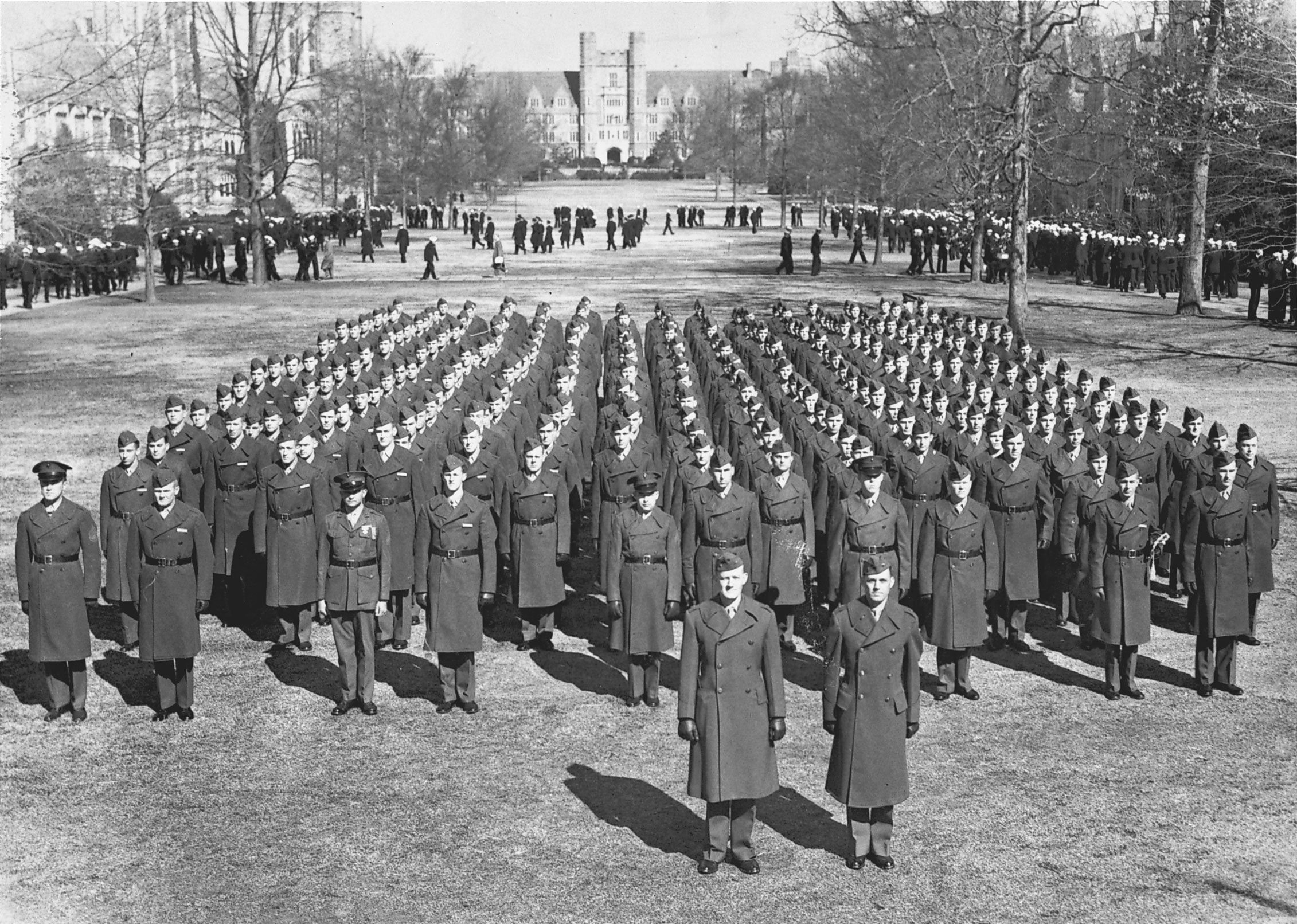
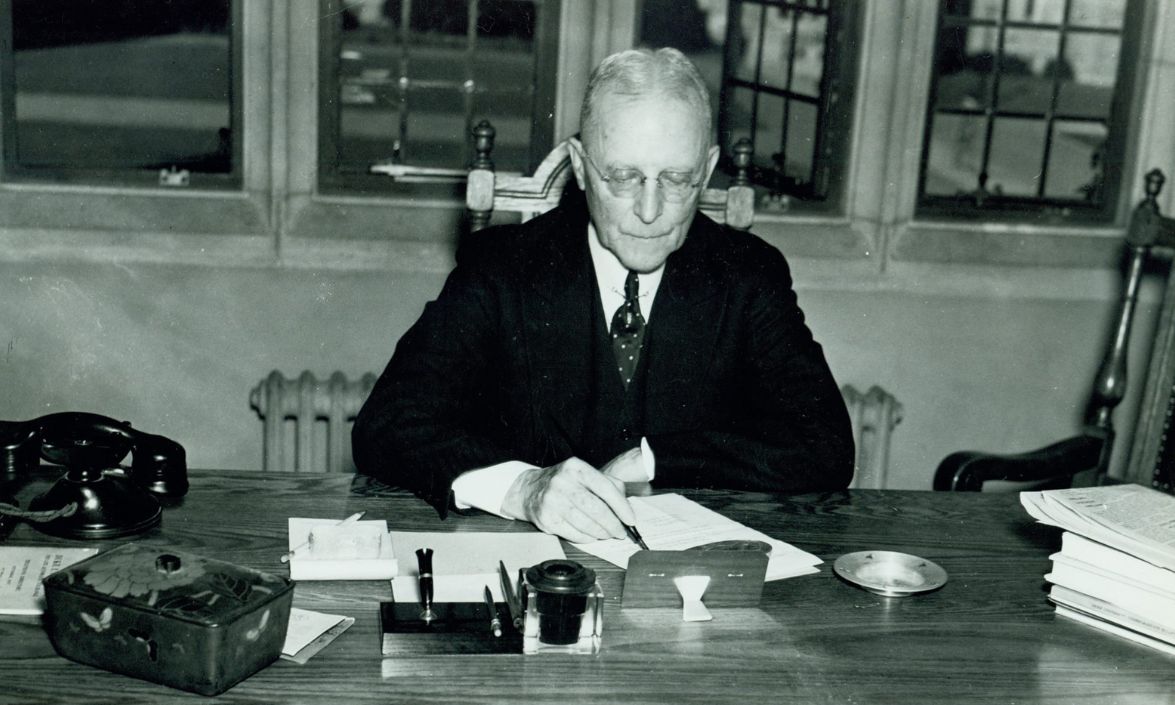
THREE YEARS, TEN GRADUATIONS
A 1891 graduate of the U.S. Naval Academy, Robert Flowers became Duke president in 1941 and quickly faced an unprecedented challenge during World War II. Many students moved in accelerated fashion through classes to military service. Between 1943 and 1945, Flowers oversaw 10 graduation ceremonies. As the casualties mounted, Flowers’ message took on a more somber tone. READ MORE
THE AMERICAN INVOLVEMENT IN WORLD WAR II meant that the university committed itself to one primary focus for the next five years: supporting the national defense effort.
As the draft began and national priorities were clarified, Duke rose to the challenge. The university’s missions of teaching, research and service all pivoted to engage with the war effort, and thousands of Duke students, faculty, employees and alumni joined the effort.
Duke’s research enterprise rapidly focused on topics of military interest. The federal government began to invest strategically in engineering, chemistry, medicine and other disciplines. Chemistry professor Paul M. Gross led a project to devise a bullet that would break up on impact, while other Duke research projects studied the effects of Vitamin B deprivation and ways to control sexually transmitted diseases.
To mark the 80th anniversary of D-Day, Duke Chapel carillonneur Aaron Colston will perform a special selection of music during the daily 5 p.m. carillon concert.
Duke’s student ranks grew with an influx of women and soldiers who saw furthering their education as a means to work for the war. In 1946, Marie L. Foote and Muriel G. Theodorsen became the first two women to graduate from Duke with engineering degrees. After graduation, Theodorsen later reflected that “women in engineering are not undesirable, inept intruders in a traditionally all-male field; but, rather, that we are able co-workers who can carry our own weight and sometimes even excel in this field of untold importance to humanity.” Economics, the School of Medicine, and the Divinity School also saw their enrollment of women students increase.
The School of Nursing focused on training nurses for service. The Erwin Road dormitory for nurses was constructed in 1943, with Duke and the Federal Works Administration each contributing $63,650 toward the cost.
Many students gained military training by joining divisions on campus. During the war, Duke activated a Naval Reserve Officers Training Corps (NROTC) and hosted an Army Finance School. Duke was also one of more than 130 colleges and universities nationwide to set up a Navy V-12 program to train and commission officers. Duke offered an accelerated trimester system for the V-12 program and held 10 graduations between 1943 and 1945. Over 4,000 student soldiers came through these programs, including the author William Styron, who transferred to Duke’s V-12 program in 1943 and returned after the war to complete his degree in English.
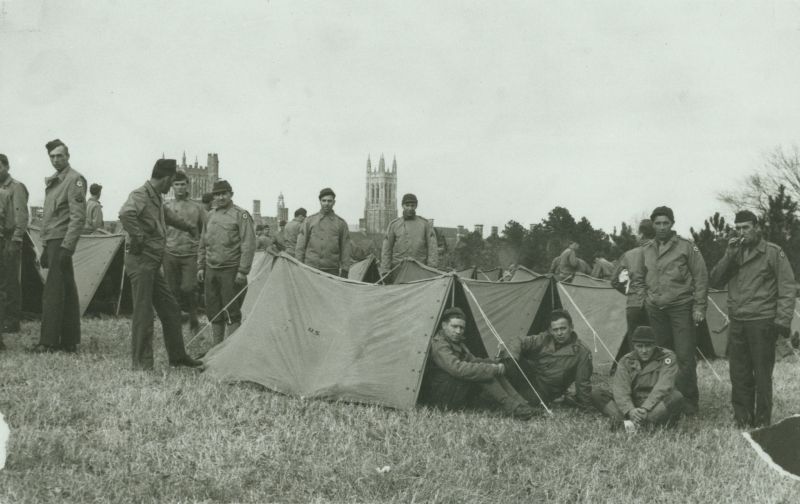
Duke also fostered a culture of patriotic volunteerism among its students and employees, especially through the College Organization for General Service (COGS) and the Duke Civilian Public Service Unit. These organizations and others brought national attention to Duke.
Duke even staffed an entire U.S. Army hospital, the 65th General Hospital Unit, with Duke students, alumni and faculty. Members of the unit trained on West Campus before leaving for England, where the 65th carried out lifesaving care for over 17,000 soldiers in Europe during the war, earning many distinguished citations.
The idea of a Duke hospital army unit was proposed by Wilburt C. Davison, then dean of the School of Medicine. Activated in July 1942, the army reserve unit was staffed entirely by Duke medical faculty, alumni, and current or former house staff. From 1944 to 1945, the 65th General Hospital was set up at Redgrave Park in Suffolk, England. The unit cared for wounded soldiers who had been evacuated from front-line hospitals in Europe, treating more than 17,250 patients with a very low mortality rate of 0.4 percent.
In the Law School, many faculty members left for wartime service, and student enrollment dropped precipitously. For several years, the law school of Wake Forest University relocated to Duke because of low enrollment. After the war, returning veterans enrolled in numbers that grew the student population to an unprecedented size for the next five years.
(Sources for this article include the two online exhibitions, “Duke University During World War II” and “Remembering the 65th,” shown below.)
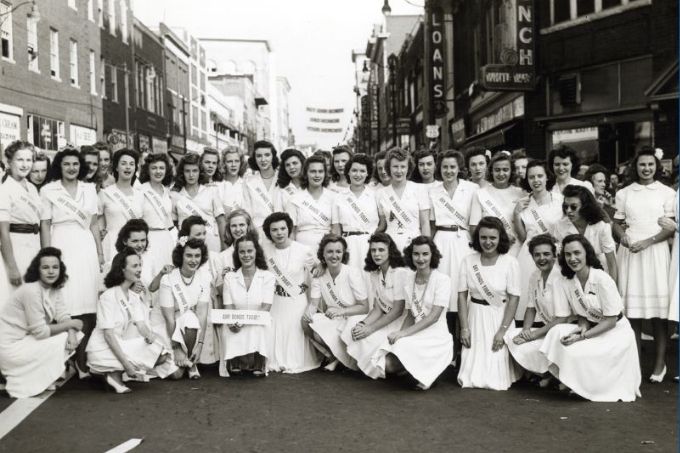
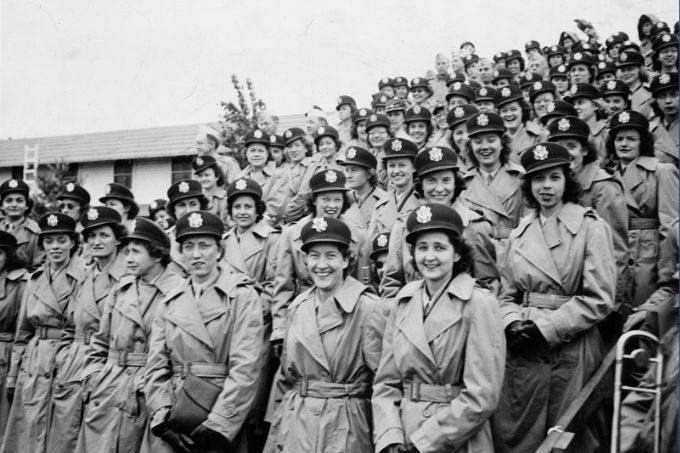
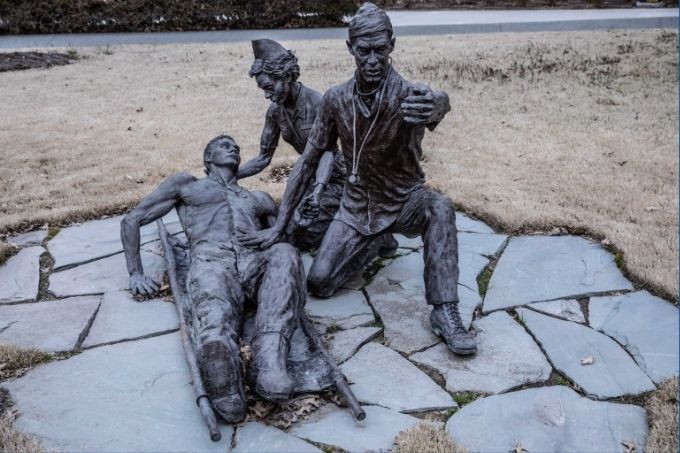
READ MORE
